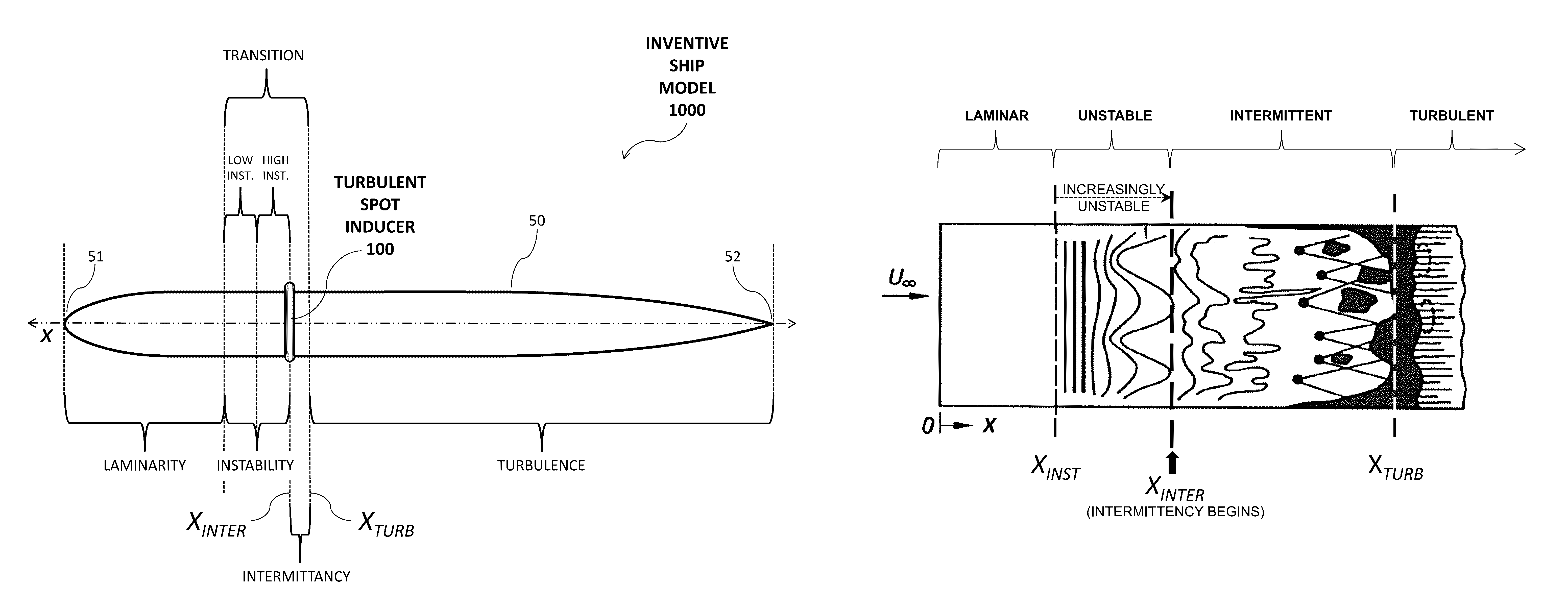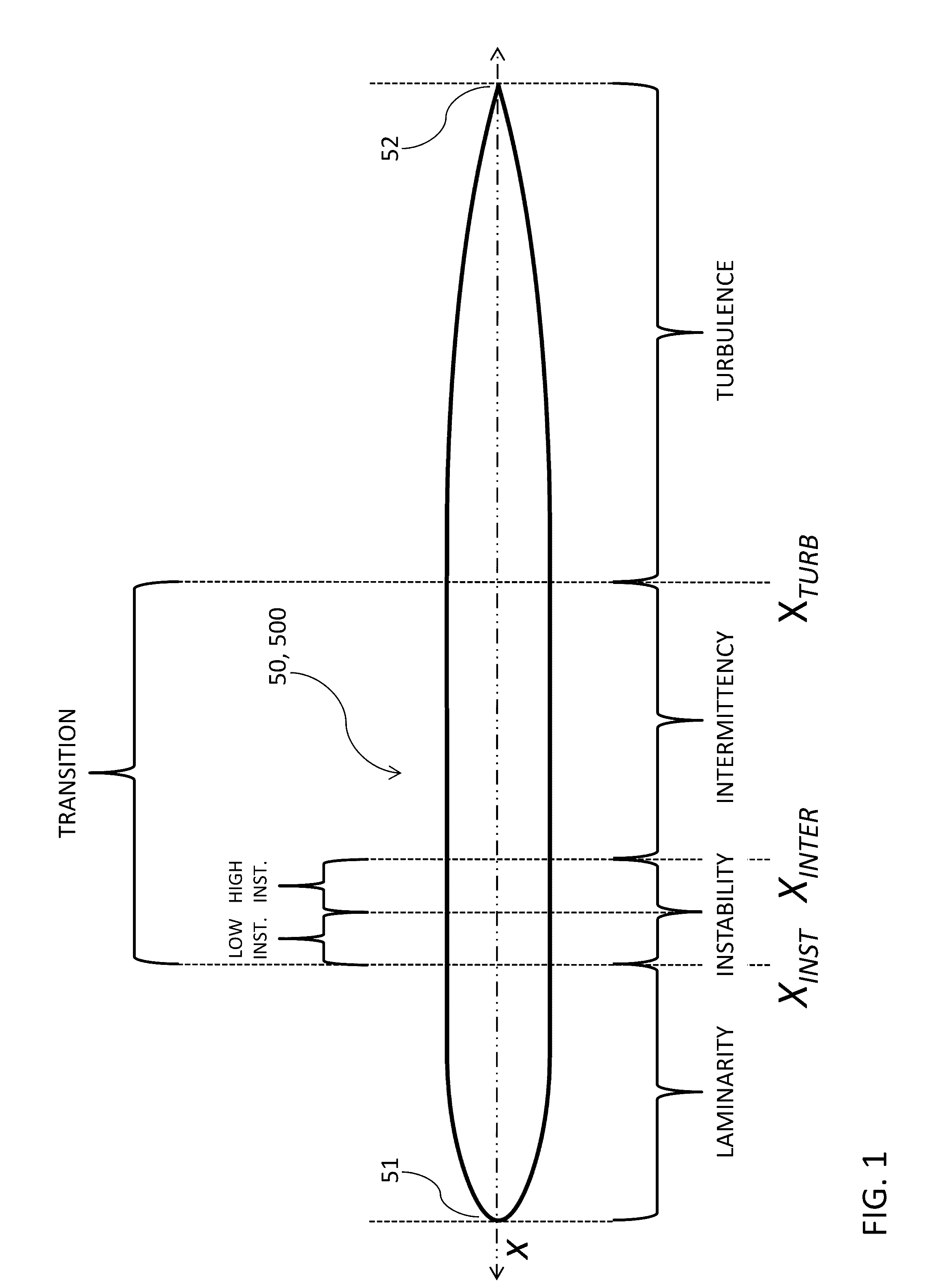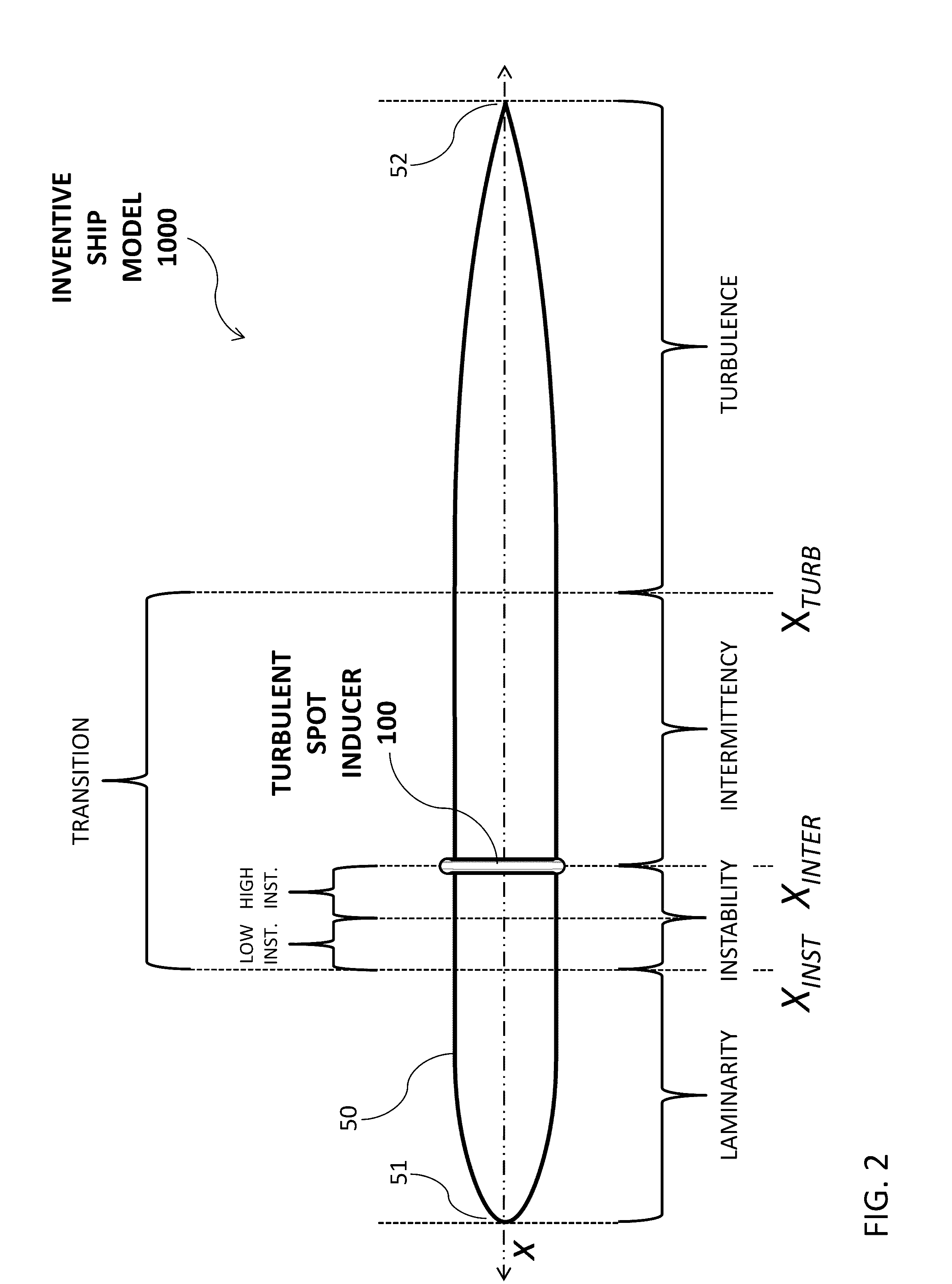Ship resistance prediction using a turbulent spot inducer in model testing
- Summary
- Abstract
- Description
- Claims
- Application Information
AI Technical Summary
Benefits of technology
Problems solved by technology
Method used
Image
Examples
Embodiment Construction
[0022]Reynolds numbers that are based on full-scale ship lengths are typically on the order of 5×108 to 5×109. At such high Reynolds numbers, boundary layer transition from laminar to turbulent will occur near the body nose of a full-scale ship, and practically the entire full-scale ship hull surface will be in a turbulent boundary layer. The turbulence region of a full-scale vessel thus extends approximately the entire length of the full-scale vessel.
[0023]In contrast, when vessel models are tested (e.g., using a carriage in a towing tank), their Reynolds numbers are typically one to two orders of magnitude less (depending on model sizes and model test speeds) than the Reynolds numbers occurring for the corresponding vessels at full scale. The region of laminar flow is significantly larger on a model surface than on a full-scale body surface. The resistance coefficients are significantly different in a laminar flow than in a turbulent flow.
Conventional Model Testing: Turbulence Sti...
PUM
 Login to View More
Login to View More Abstract
Description
Claims
Application Information
 Login to View More
Login to View More - R&D
- Intellectual Property
- Life Sciences
- Materials
- Tech Scout
- Unparalleled Data Quality
- Higher Quality Content
- 60% Fewer Hallucinations
Browse by: Latest US Patents, China's latest patents, Technical Efficacy Thesaurus, Application Domain, Technology Topic, Popular Technical Reports.
© 2025 PatSnap. All rights reserved.Legal|Privacy policy|Modern Slavery Act Transparency Statement|Sitemap|About US| Contact US: help@patsnap.com



